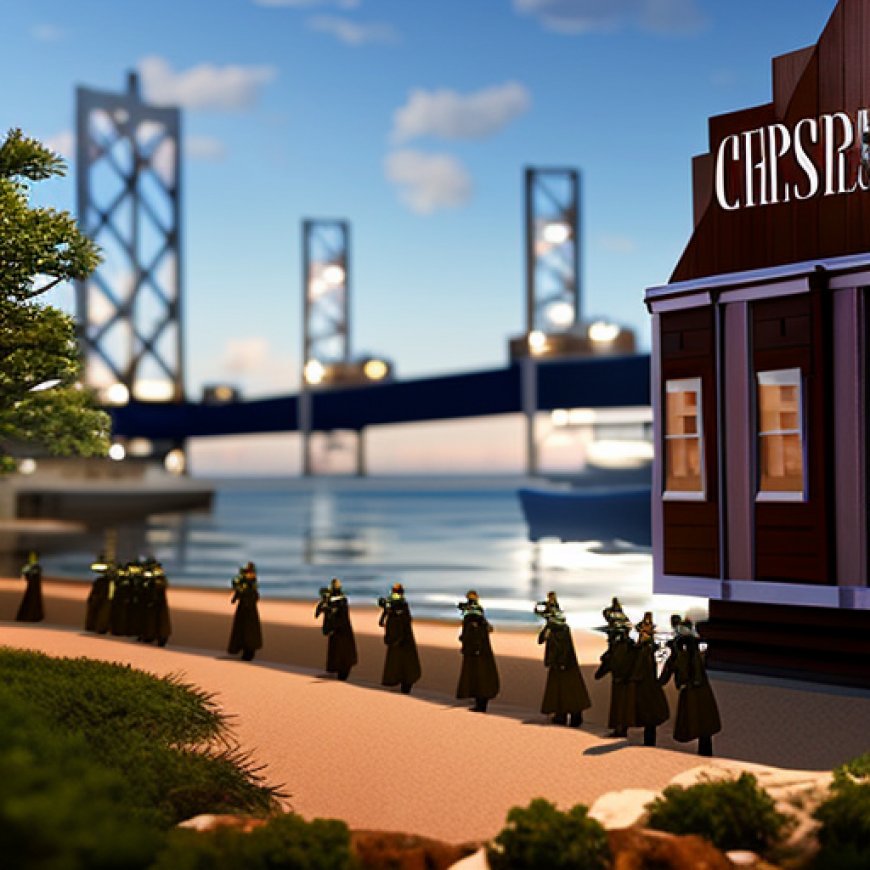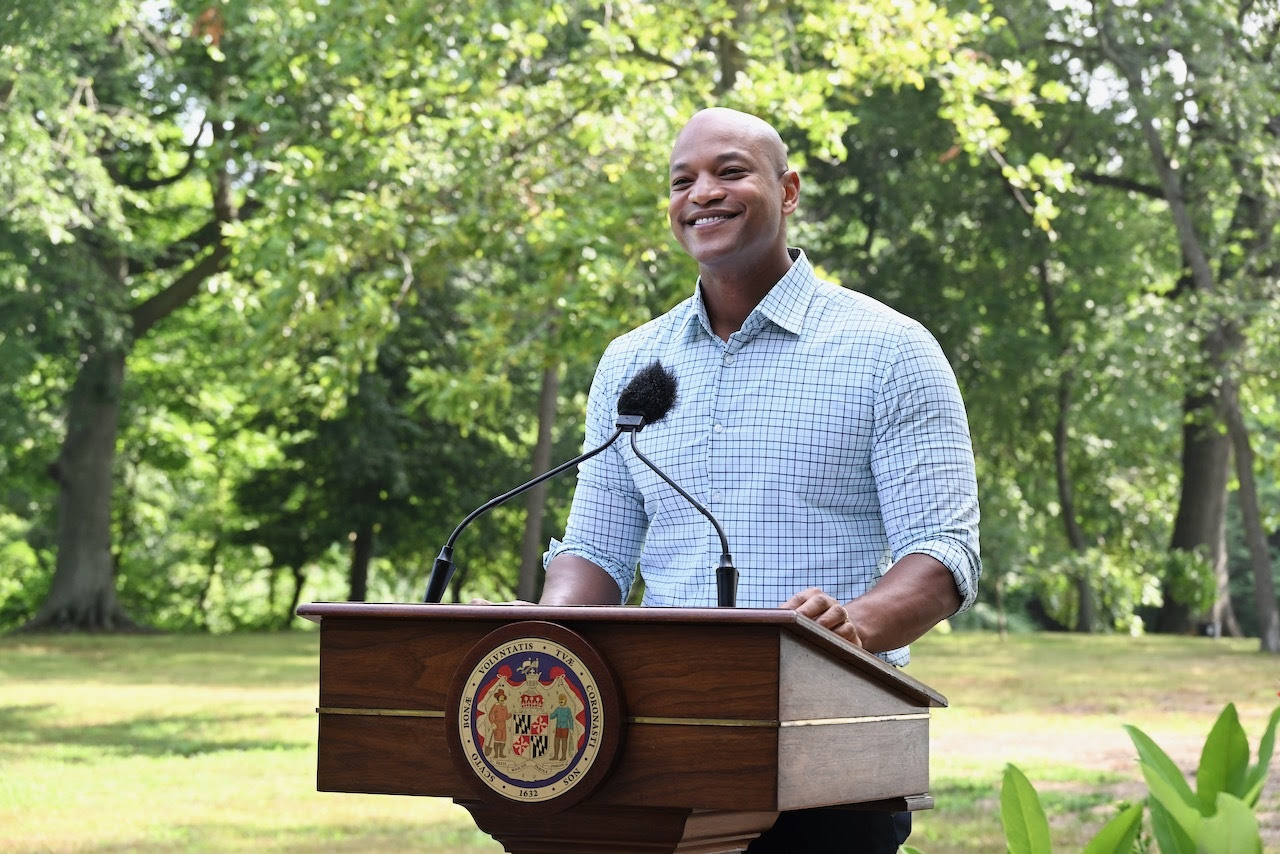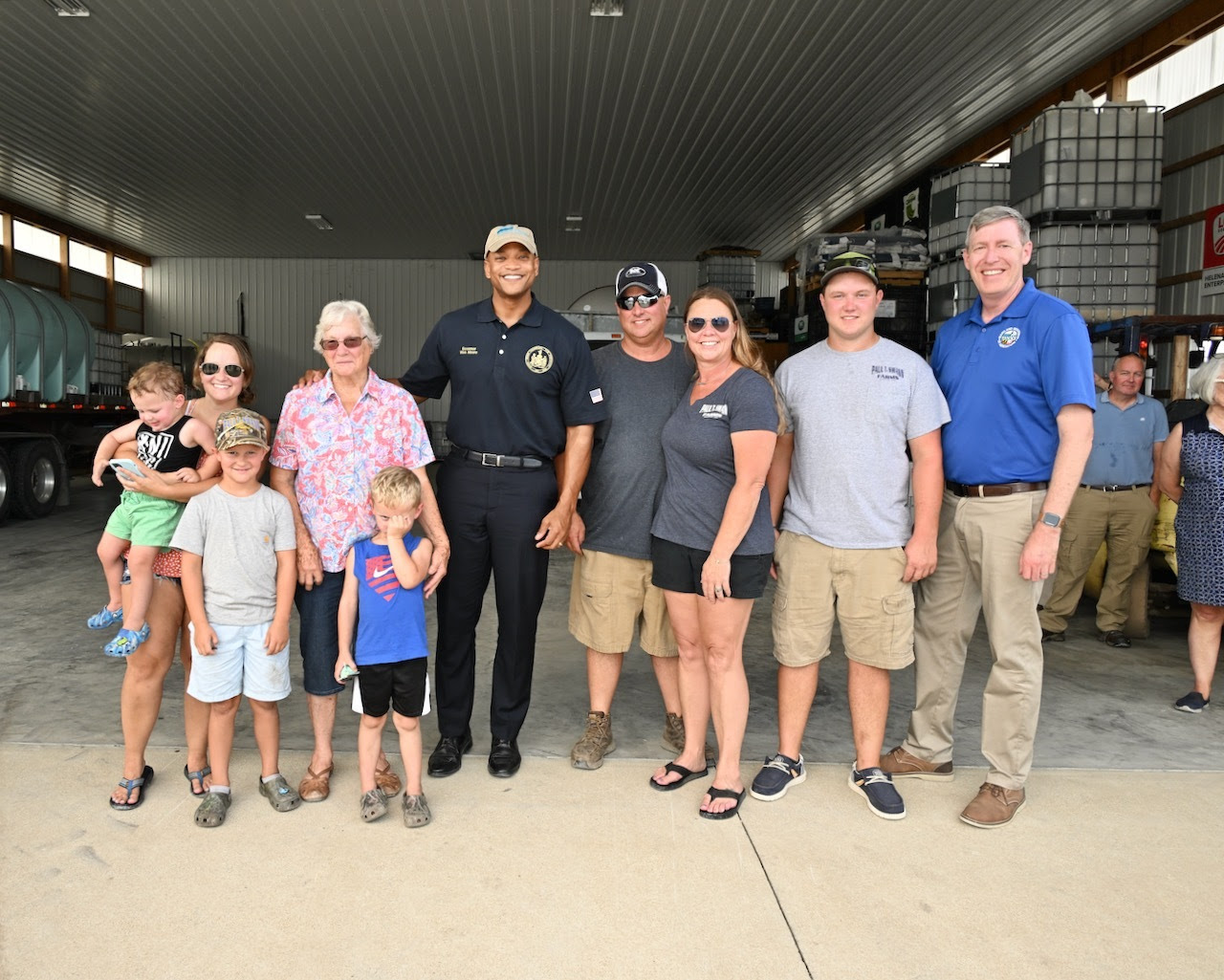Governor Moore Announces New Chesapeake and Atlantic Coastal Bays Improvement Strategy – Press Releases – News – Office of Governor Wes Moore
Governor Moore Announces New Chesapeake and Atlantic Coastal ... Governor Larry Hogan - Official Website for the Governor of Maryland


ANNAPOLIS, MD
Governor Wes Moore Announces New Chesapeake and Atlantic Coastal Bays Improvement Strategy
During an Eastern Shore “Bay Day” tour, Governor Wes Moore today announced a major policy shift in how Maryland will deploy state resources to improve water quality in the Chesapeake Bay and other waterways to restore the Chesapeake and Atlantic Coastal Bays. At points throughout the day, the governor was joined by Lieutenant Governor Aruna Miller, U.S. Environmental Protection Agency Region 3 Administrator Adam Ortiz, and various state, local, and federal officials to learn more about the impact of policies on local communities and industries.

Under the Moore-Miller administration, Maryland will become the first state in the Bay watershed to embrace the latest scientific recommendations to improve our land and clean our waterways, taking a proactive approach to creating healthier waterways that are more accessible for Maryland’s communities, more resilient to climate change, and benefit the important industries that depend on the Chesapeake and Coastal Bays.
To support the effort, Governor Moore signed two executive orders and outlined plans to provide more places for people to safely swim, better protect coastal areas from climate change, and increase fish and crab populations to improve economic opportunities for watermen and the state’s seafood industries.
Creating the Governor’s Council on the Chesapeake and Coastal Bays Watershed

“The bay belongs to all of us, and it’s on all of us to protect it,” said Lt. Gov. Miller. “Today’s announcement solidifies our administration’s plan to ensure Maryland does its part to make our coastal bays a thriving ecosystem for future generations. Whether it’s farmers, homeowners, boaters, or business owners, our approach invites every Marylander to be a part of the solution to keeping our waterways clean.”
Speaking at Wye Island Natural Resources Management Area in Queenstown, the governor signed a new executive order to create the Governor’s Council on the Chesapeake and Coastal Bays Watershed, renaming and restructuring the former Governor’s Council on the Chesapeake Bay, or Bay Cabinet, which was first formed in 1985. The restructured council will be charged with coordinating and accelerating the restoration of the state’s waterways with a collective goal to create healthy watersheds that benefit the environment, economy, and communities.
Improving Wildlife Habitat and Populations

Maryland will focus water quality improvement projects in specific areas with the most potential to improve wildlife habitat and populations and bolster shorelines from rising sea levels. “The new focus on increasing wildlife habitat will help striped bass and blue crab populations recover. Our ongoing effort to plant 5 million new trees in Maryland during the next decade will add new streamside buffers along rural and suburban areas as well as increase tree canopy in our cities to prevent polluted runoff and cool temperatures,” said Maryland Department of Natural Resources Secretary Josh Kurtz. “As rising sea levels and stronger storms due to climate change threaten Maryland, we’ll be looking to expand marshes and reconnect streams and rivers to their floodplains to mitigate flooding threats.”
Establishing the Oyster and Shell Substrate Task Force

At the University of Maryland’s Center for Environmental Science at Horn Point, Gov. Moore signed a second executive order to establish the Oyster and Shell Substrate Task Force. The diverse task force was created to develop a proactive plan to keep and purchase oyster shells to ensure the state has enough hard surface to increase oyster abundance in the Bay.
Supporting the Blue Crab Industry

Gov. Moore also traveled to J.M. Clayton Seafood in Cambridge, where he met with leaders and discussed issues surrounding the Bay’s blue crab industry.
Regenerative Agriculture

The tour finished in Easton at a regenerative agriculture farm owned by Paul Swann, where the governor viewed best practices to help reduce agricultural runoff.
SDGs, Targets, and Indicators in the Article
1. Which SDGs are addressed or connected to the issues highlighted in the article?
- SDG 6: Clean Water and Sanitation
- SDG 14: Life Below Water
- SDG 15: Life on Land
2. What specific targets under those SDGs can be identified based on the article’s content?
- SDG 6.3: By 2030, improve water quality by reducing pollution, eliminating dumping and minimizing release of hazardous chemicals and materials, halving the proportion of untreated wastewater, and substantially increasing recycling and safe reuse globally.
- SDG 14.2: By 2020, sustainably manage and protect marine and coastal ecosystems to avoid significant adverse impacts, including by strengthening their resilience and take action for their restoration, to achieve healthy and productive oceans.
- SDG 15.1: By 2020, ensure the conservation, restoration, and sustainable use of terrestrial and inland freshwater ecosystems and their services, in particular forests, wetlands, mountains, and drylands, in line with obligations under international agreements.
3. Are there any indicators mentioned or implied in the article that can be used to measure progress towards the identified targets?
- Indicator for SDG 6.3: Reduction in pollution levels in the Chesapeake Bay and other waterways.
- Indicators for SDG 14.2: Increase in fish and crab populations in the Chesapeake Bay.
- Indicators for SDG 15.1: Increase in wildlife habitat, including marshes, and the planting of 5 million new trees in Maryland.
Table: SDGs, Targets, and Indicators
| SDGs | Targets | Indicators |
|---|---|---|
| SDG 6: Clean Water and Sanitation | 6.3: By 2030, improve water quality by reducing pollution, eliminating dumping and minimizing release of hazardous chemicals and materials, halving the proportion of untreated wastewater, and substantially increasing recycling and safe reuse globally. | Reduction in pollution levels in the Chesapeake Bay and other waterways. |
| SDG 14: Life Below Water | 14.2: By 2020, sustainably manage and protect marine and coastal ecosystems to avoid significant adverse impacts, including by strengthening their resilience and take action for their restoration, to achieve healthy and productive oceans. | Increase in fish and crab populations in the Chesapeake Bay. |
| SDG 15: Life on Land | 15.1: By 2020, ensure the conservation, restoration, and sustainable use of terrestrial and inland freshwater ecosystems and their services, in particular forests, wetlands, mountains, and drylands, in line with obligations under international agreements. | Increase in wildlife habitat, including marshes, and the planting of 5 million new trees in Maryland. |
Behold! This splendid article springs forth from the wellspring of knowledge, shaped by a wondrous proprietary AI technology that delved into a vast ocean of data, illuminating the path towards the Sustainable Development Goals. Remember that all rights are reserved by SDG Investors LLC, empowering us to champion progress together.
Source: governor.maryland.gov

Join us, as fellow seekers of change, on a transformative journey at https://sdgtalks.ai/welcome, where you can become a member and actively contribute to shaping a brighter future.







